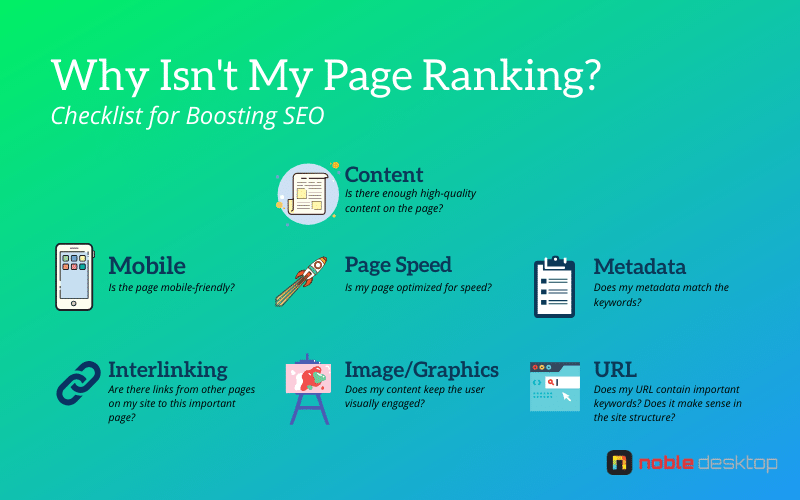Discover how to boost your SEO in seven steps, and explore the potential career outcomes of expanding your digital marketing expertise. From creating high-quality content to ensuring mobile-friendliness and improving page speed, you can dramatically enhance your professional skillset.
Key Insights
- High-quality, relevant content boosts SEO by engaging users, establishing expertise, and earning backlinks from other sites.
- A mobile-friendly page is essential for effective SEO. Tools such as Google's PageSpeed Insights and Search Console can be leveraged for mobile speed testing and mobile-friendliness respectively.
- Technical SEO includes improving page and site speed. Tools such as GTmetrix, Google Analytics, and Google Search Console can help identify and fix site speed issues.
- Metadata, including page and article titles, is crucial for on-page SEO. Titles and tags should align with targeted keywords and industry relevance.
- Interlinking across a website enhances user experience and eases Google's site crawling process.
- Images and graphics on pages enhance user engagement, which is generally rewarded by Google.
- URLs can significantly impact SEO. It is important to optimize URLs with targeted keywords.
So… your page isn’t ranking even though you think you’ve done it all. In this article, we’ll cover some things to check for when your page isn’t ranking or general tips to boost the ranking of a page.
Note: you can always check if your page is indexed by typing “site:yourwebsite.com/page.” You can request a page to be re-indexed using Google Search Console.

1. Content
Putting out high-quality, relevant content is always the tried and true way to boost your SEO. Good content works in multiple ways from engaging users, establishing expertise, and even getting backlinks from other sites. So, for today, start by writing a quality article that is relevant and helpful to your audience. If you sell mattresses online, you may want to write about the different qualities and types of mattresses for someone to consider when shopping online. Adding more quality content to the page can be a big boost and content on your site that links back to the page can also help. See our article on what works for content marketing.
2. Mobile-friendly
Make sure your page is mobile-friendly. You can use Google’s PageSpeed Insights for mobile speed test or Search Console for mobile-friendliness. Learn more about the key tools for search marketing.
3.Page Speed
Part of technical SEO involves page and site speed. There are tons of tools out there to help diagnose and fix site speed issues. Using these tools, you can see which pages are slow and hurting your SEO and get recommendations as to how to fix them. A couple of reputable tools here are GTmetrix, Google Analytics, and Google Search Console. See our article on 8 ways to improve site speed.
4. Metadata
Metadata is an important part of on-page SEO, so it may be worthwhile to go through the titles on your site for various pages and articles to make sure they are appropriately set. You want to make sure that your titles and tags are aligned towards the keywords you are looking to rank for and the relevance to your industry.
5. Interlinking
Find other places on the site where it would make sense to link to that page naturally. This goes for both links to this page and links to other pages. The more natural linking you do across your site, the easier it is for the user to get the right information they need, and the easier it is for Google to crawl your site. Link back to the page you are trying to rank for wherever else on your site it naturally makes sense.
6. Images/Graphics
Add useful graphics or images to your pages to make them come alive. In my experience, images or graphics do a great job of engaging the user, and Google generally rewards this. Most people don’t like ready huge blocks of text so if you can convey some content visually it can help.
7. URL
Make sure your URL is helping you, not hurting you. If you are trying to rank for the best email platform then you probably want a URL that reads something like /best-email-platforms or /email-platform. As with a lot of things in search, you need to know the keywords you are optimizing for and make sure that they are present in key places like the URL.
Become a Digital Marketing Expert
To continue your journey in SEO and digital marketing see our full suite of digital marketing courses in NYC or live online. We are also offering a new Digital Marketing Certificate where you will cover SEO, Google Ads, social media marketing, Google Analytics, and more.

